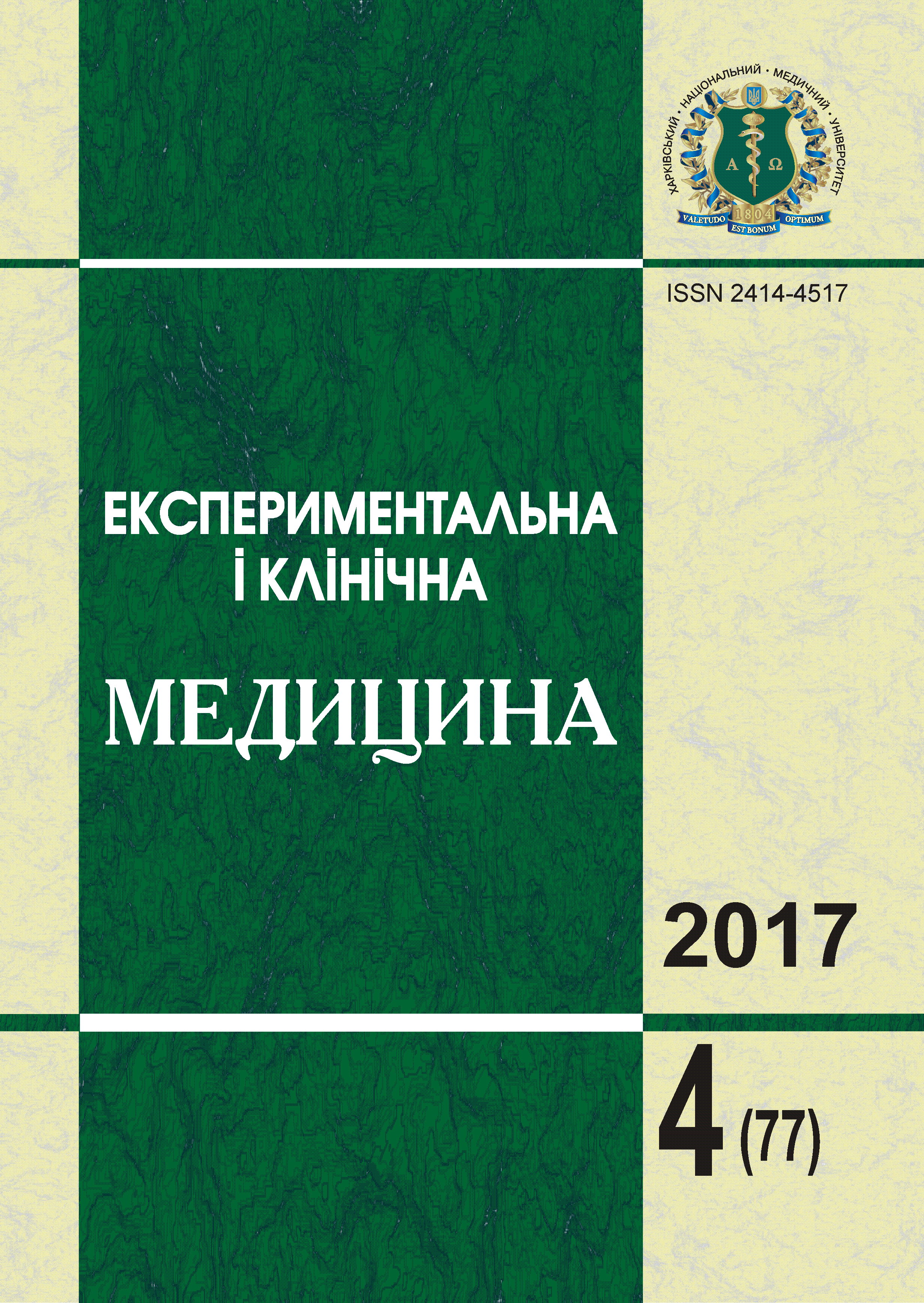Abstract
In this work, the authors resort to an analysis of the molecular and morphological factors that have affected the survival of patients with gastric cancer (n = 221). The survival of this group of patients was analyzed on the basis of the study of molecular markers VEGFR, p53, Her2, Ki-67. The role in the survival of patients of such morphological factors as the degree of differentiation of the primary tumor of the stomach, the presence of microscopic invasion of tumor perineurium and microcirculatory bed, the degree of germination of the wall thickness of the stomach, the number of regional lymph nodes in which metastases are found, the tumor area measured by the morphologist after removal of the drug , and some others. As an arbiter, there are survival curves calculated using the David Roxby Cox technique, a simple life time measured in months, and areas under the survival curves.References
Cidon E.U., Ellis S.G., Inam Y. et al. (2013). Molecular targeted agents for gastric cancer: a step forward towards personalized therapy. Cancers (Basel). 5 (1): 64–91. doi: 10.3390/cancers5010064.
Jong Gwang Kim (2013). Molecular targeted therapy for advanced gastric cancer. Korean J Intern. Med. Mar; 28 (2), 149–155. PMCID: PMC3604602.
Japanese Classification of Gastric Carcinoma – 2nd English Edition – Japanese Gastric Cancer Association. Gastric Cancer (1998) 1: 10-24
Chen T., Xu X.Y., Zhou P.H. (2016). Emerging molecular classifications and therapeutic implications for gastric cancer. Chin. J. Cancer. May 27; 35 (1), 49. doi: 10.1186/s40880-016-0111-5. Review. PMID:27233623.
Weiguo Cao, Rong Fan, Weiping Yang, Yunlin Wu (2014). VEGF-C expression is associated with the poor survival in gastric cancer tissue. Tumor Biology. April, Vol. 35, Issue 4, 3377–3383.
Zhang W. (2014). TCGA divides gastric cancer into four molecular subtypes: implications for individualized therapeutics. Chin. J. Cancer. 33 (10), 469–470.
Murphy G., Pfeiffer R., Camargo M.C., Rabkin C.S. (2009). Meta-analysis shows that prevalence of Epstein-Barr virus-positive gastric cancer differs based on sex and anatomic location. Gastroenterology. 137 (3), 824–833.
Burke A.P., Yen T.S., Shekitka K.M., Sobin L.H. (1990). Lymphoepithelial carcinoma of the stomach with Epstein-Barr virus demonstrated by polymerase chain reaction. Mod Pathol. 3 (3), 377–380.
Sheffield Brandon, Garratt J., Kalloger S.E. et al. (2014). HER2/neu testing in gastric cancer by immunohistochemistry: assessment of interlaboratory variation. Arch Pathol Lab Med. Nov; 138 (11), 1495–1502. doi: 10.5858/arpa.2013-0604-OA.
Terashima M., Kitada K., Ochiai A., et al. (2012). ACTS-GC Group. Impact of expression of human epidermal growth factor receptors EGFR and ERBB2 on survival in stage II/III gastric cancer. Clin Cancer Res. 18, 5992–6000. doi: 10.1158/1078-0432.CCR-12-1318. [PubMed] [Cross Ref]
Kim J.Y., Jeon T.J., Bae B.N., et al. (2013). The prognostic significance of growth factors and growth factor receptors in gastric adenocarcinoma. APMIS. 121, 95–104. doi: 10.1111/j.1600-0463.2012.02942.x. [PubMed][Cross Ref]
Kanayama K., Imai H., Yoneda M. et al. (2016). Significant intratumoral heterogeneity of human epidermal growth factor receptor 2 status in gastric cancer: A comparative study of immunohistochemistry, FISH, and dual-color in situ hybridization. Cancer Sci. Apr; 107 (4), 536–542. doi: 10.1111/cas.12886. Epub 2016 Feb 19. PMID:26752196.
Stahl P., Seeschaaf C., Lebok P. et al. (2015). Heterogeneity of amplification of HER2, EGFR, CCND1 and MYC in gastric cancer. BMC Gastroenterol. 15, 7. doi: 10.1186/s12876-015-0231-4.
Julian Ananiev, Maya Gulubova, Irena Manolova, Georgi Tchernev (2011). Prognostic significance of HER2/neu expression in gastric cancer. Article (PDF Available) in Wiener klinische Wochenschrift 123 (13–14), 450–454 ,• July (полнотекстовая).
Jan Trøst Jørgensen, Maria Hersom (2012). HER2 as a prognostic marker in gastric cancer - A systematic analysis of data from the literature. J Cancer. 3, 137–144. doi:10.7150/jca.4090 (полнотекстовая).
Gravalos C.; Jimeno A. (2008). Her2 in Gastric Cancer: A New Prognostic Factor and a Novel Therapeutic Target. Ann Oncol. 19 (9), 1523–1529 (полнотекстовая).
Josef Rüschoff, Wedad Hanna, Michael Bilous et al. (2012). Her2 testing in gastric cancer: a practical approach. Modern Pathology. 25, 637–650.
Sheffield B.S.1, Garratt J., Kalloger S.E. et al. (2014). HER2/neu testing in gastric cancer by immunohistochemistry: assessment of interlaboratory variation. Arch. Pathol. Lab. Med. Nov; 138 (11), 1495–1502. doi: 10.5858/arpa.2013-0604-OA.
Huang G., Chen S., Wang D. et al. (2016). High Ki67 Expression has Prognostic Value in Surgically-Resected T3 Gastric Adenocarcinoma. Clin. Lab. 62 (1–2), 141–153. PMID:27012044.
Amato M., Perrone G., Righi D. et al. (2016). Her2 Status in Gastric Cancer: Comparison between Primary and Distant Metastatic Disease. Pathol Oncol Res. Jun 30. PMID:27363700.
Kawata S., Yashima K., Yamamoto S. et al. (2015). AID (activation-induced cytidine deaminase), p53 and MLH1 expression in early gastric neoplasms and the correlation with the background mucosa. Oncol Lett. Aug; 10 (2), 737–743.
